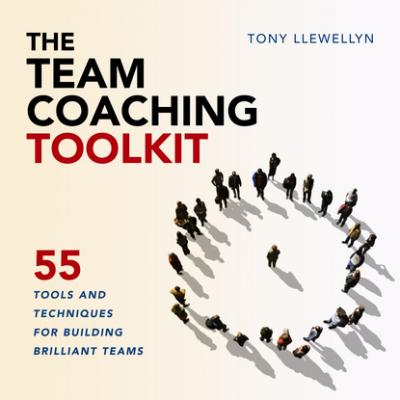ТОП просматриваемых книг сайта:















The Team Coaching Toolkit. Tony Llewellyn
Читать онлайн.Название The Team Coaching Toolkit
Год выпуска 0
isbn 9781910056738
Автор произведения Tony Llewellyn
Жанр Банковское дело
Издательство Ingram
24. Everyone speaks, everyone is heard
25. Systemic problem-solving model
28. Agree your meeting strategy
30. Perceptual positions from the ‘extra chair’
31. Building stakeholder support
Chapter 7 – Tools for building resilience
33. Taking the resilience temperature
35. Coping with difficult news
36. Fault free conflict management and the ‘Evil Genius’
38. The pre-mortem: An alternative approach to risk management
Chapter 8 – Tools for encouraging learning, innovation and improvement
42. How are we performing? Team key performance indicators
43. Lifting the barriers to allow creative thinking
44. Running a successful ‘lessons learned’ session
Chapter 9 – Reading list and other resources
ILLUSTRATIONS
FIGURES
Figure 1 – The foundation layers of an effective team
Figure 2 – Team coaching model
Figure 2A – Team coaching model: Assess the environment
Figure 2B – Team coaching model: Set-up
Figure 2C – Team coaching model: Communicate
Figure 2D – Team coaching model: Build Resilience
Figure 2E – Team coaching model: Improvement and learning
Figure 3 – The spheres of influence
Figure 4 – Assess the project environment
Figure 5 – Examples of typical project paradoxes
Figure 6 – An example of a Force Field Analysis
Figure 7 – Introvert–extrovert continuum
Figure 8 – Illustration of good meeting/bad meeting exercise
Figure 9 – Set up for the motivate or annoy me exercise
Figure 10 – An example of a collaboration canvas
Figure 11 – Illustration of behavioural gravity
Figure 12 – ‘No blame’ protocol
Figure 13 – Enquiring versus controlling language styles
Figure 14 – Constructive challenge cycle
Figure 15 – Kübler-Ross change curve
Figure 16 – Fault free conflict resolution process
Figure 17 – Hedges and potholes
TABLES
Table 1 – The foundation layers of the team building process
Table 3 – A changing approach to project management
Table 4 – Complicated or complex
Table 5 – Alternative approaches to gaining feedback
Table 6 – Meeting strategy guide
Table 7 – Examples of Key Performance Indicators found to have an impact on team behaviour
HOW TO USE THIS BOOK
This book is a toolkit to help you build better teams. It is therefore designed to be a quick reference guide for team leaders and team coaches to find a tool or technique that will be useful in a particular situation.

